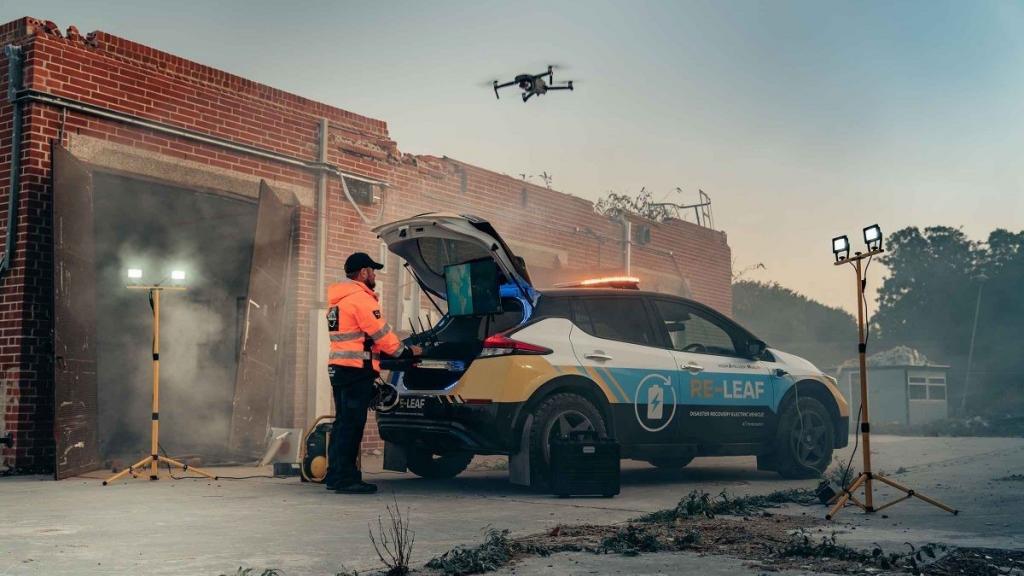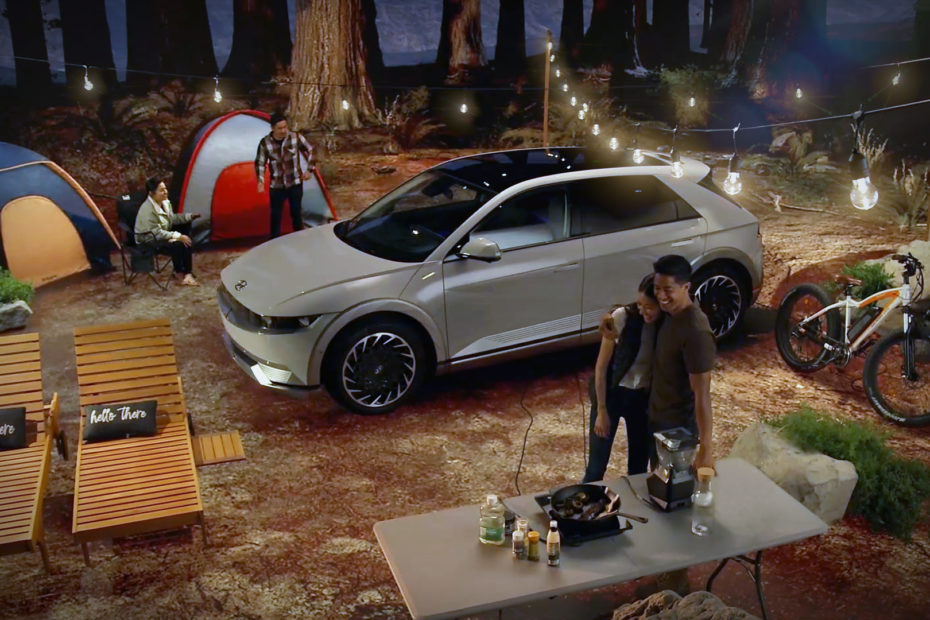Heard of V2L, V2G, V2H, and V2V?
All these are different versions of Bi-Directional Charging! Whilst considering the ownership of an EV many fancy the possibility of having Bi-Directional Charging. However, this may vary based on the location and infrastructure. It’s worth a consideration in having this technology, still new and comes at a premium.
What is it?
EVs takes AC, the electricity from the grid (or from a renewable source via a home inverter), and convert it to Direct Current (DC) electricity. This happens either via an AC-to-DC converter inside the car at home, or an AC-to-DC converter in the case of DC fast charging.
Bidirectional charging is sending that electricity back into the grid or into your home or to any other appliance like a bike, computer, etc. You’ll need a bidirectional charger that contains an internal converter that can change the DC electricity back to AC.
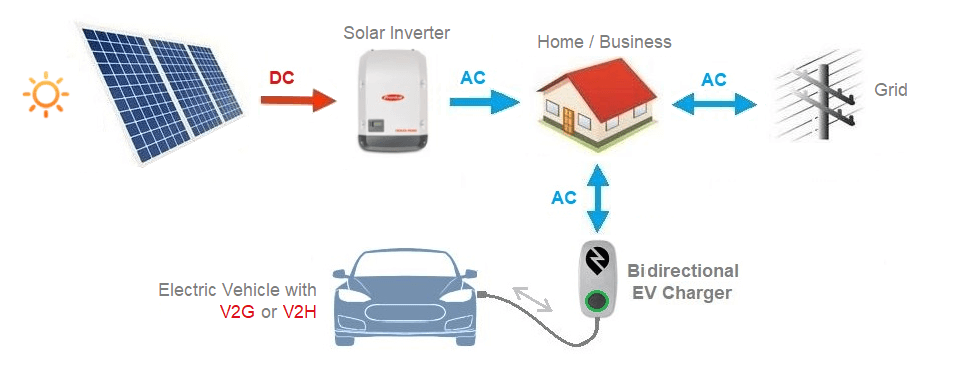
V2G – Vehicle to Grid
Ev s nowadays are having big batteries. Cars in general, spend approx 80% (destination dependent) of their time parked. So it’s about taking advantage of the situation by utilizing an EV’s ability to store and send excess energy back to the grid via bidirectional charging. V2G does exactly that, allowing an EV to charge in off-peak periods, then send electricity back to the grid during peak periods when the grid needs extra energy to meet the demand. In some countries EV s are already selling this excess energy to the grid, by making money with the use of their Bi-Directional Chargers.
V2H – Vehicle to Home
This is sending energy from your EV to the home or office. Not for limited times, powering it up for days as needed. As with V2G, V2H too reduces the pressure on the grid as required.
If your home energy source is renewable like wind or solar, you will be powering both the car and house for free. Charge up your car with the sun and then use that power stored during power outages, peak hours, or cloudy days.
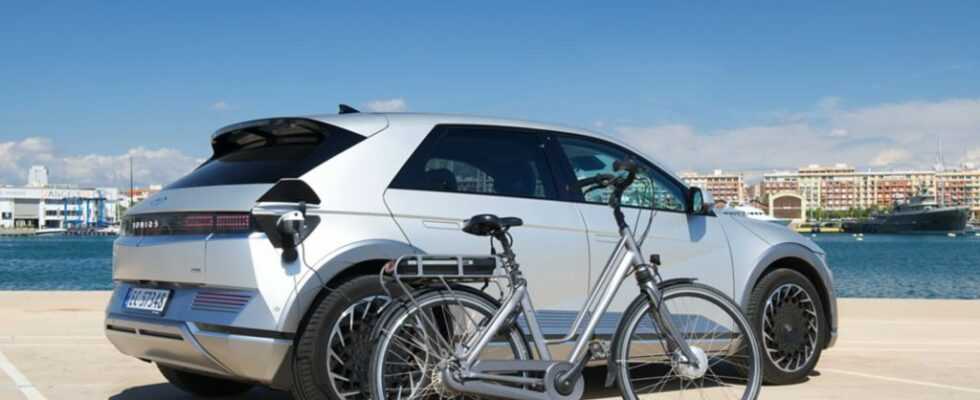
V2L – Vehicle to Load
We all got many smaller devices around us, from Laptops, Cookers, Bicycles, etc. That’s where V2L comes in handy, anywhere you happen to be parked even while camping. Eliminating the need of having a bidirectional charger, V2L equipped EV gets an integrated inverter to provide AC power via a 240V outlet.
V2V – Vehicle to Vehicle
Why not help a friend in need, a car with V2L capability can also power up another EV. In this case, too the output will be from the DC charging port, or from the AC port which will be slow charging.
What EV with BDC?
Here are some. Please note that these facilities will be destination dependent. Not all markets will be getting the same as indicated and it’s best to check with your dealer or reseller. The welcoming news is these features are expected to be standard on all new EVs by 2025 in most developed markets.
| EV | Model | Protocol | V2G | V2H | V2L |
|---|---|---|---|---|---|
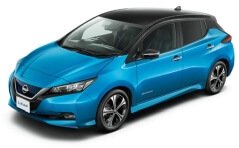 | Nissan Leaf ZE1 | Chademo | YES | YES | No |
 | Hyundai Ioniq 5 | CCS | No | No | YES 3.6kW |
 | KIA EV6 | CCS | No | No | YES 3.6kW |
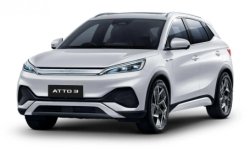 | BYD Atto 3 | CCS | No | No | YES 3.3kW * |
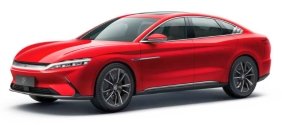 | BYD Han | CCS | No | No | YES 3.3kW * |
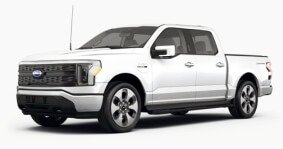 | Ford F-150 Lightning | CCS | (TBC) | YES | YES 9.6kW |
 | MG ZS EV (2022 upwards) | CCS | No | No | YES (TBC) |
 | VW iD (Optional) | CCS | No (TBC) | No (TBC) | YES (TBC) |
Re-Leaf
A Nissan concept called Re-Leaf had also been produced as an emergency electric car whose battery energy would be used in rescue operations after a natural disaster, for example.
